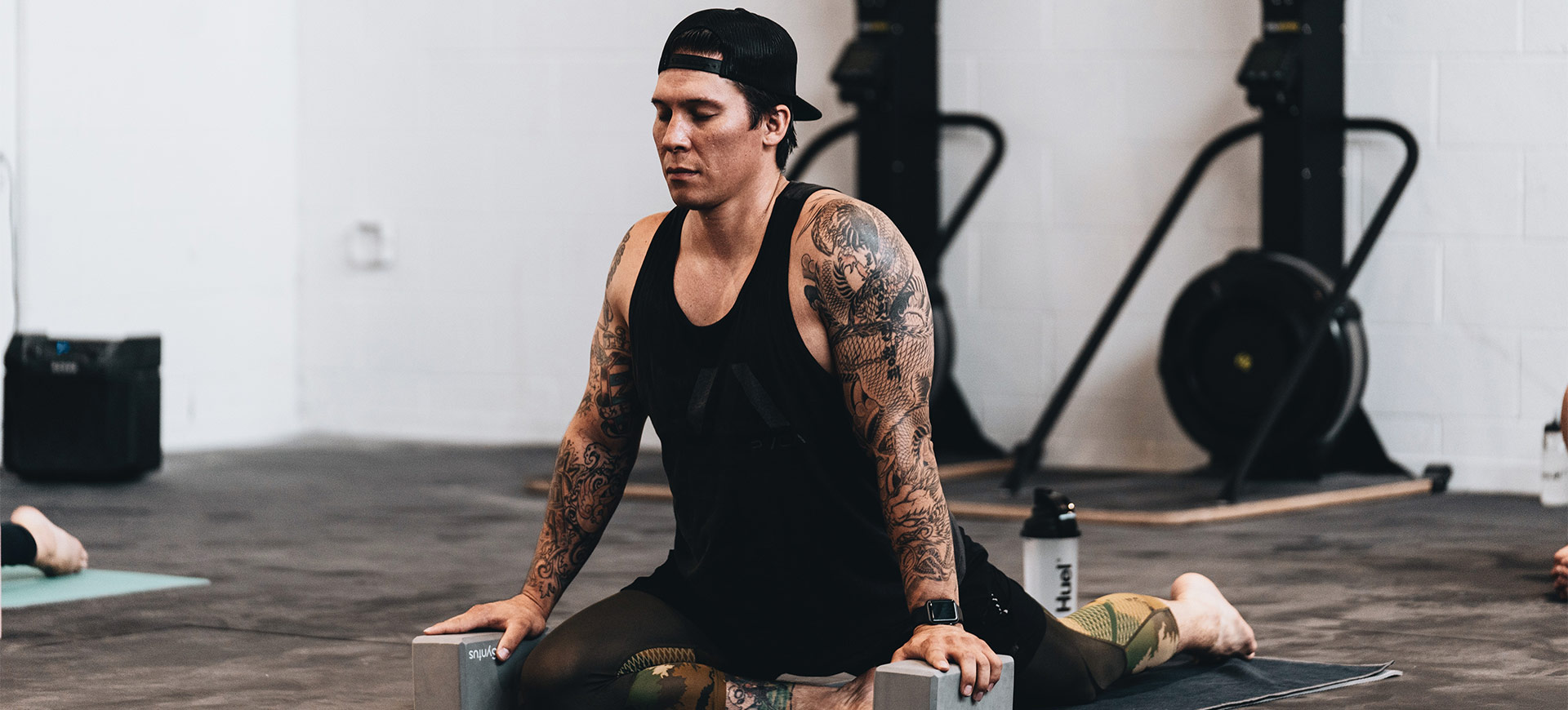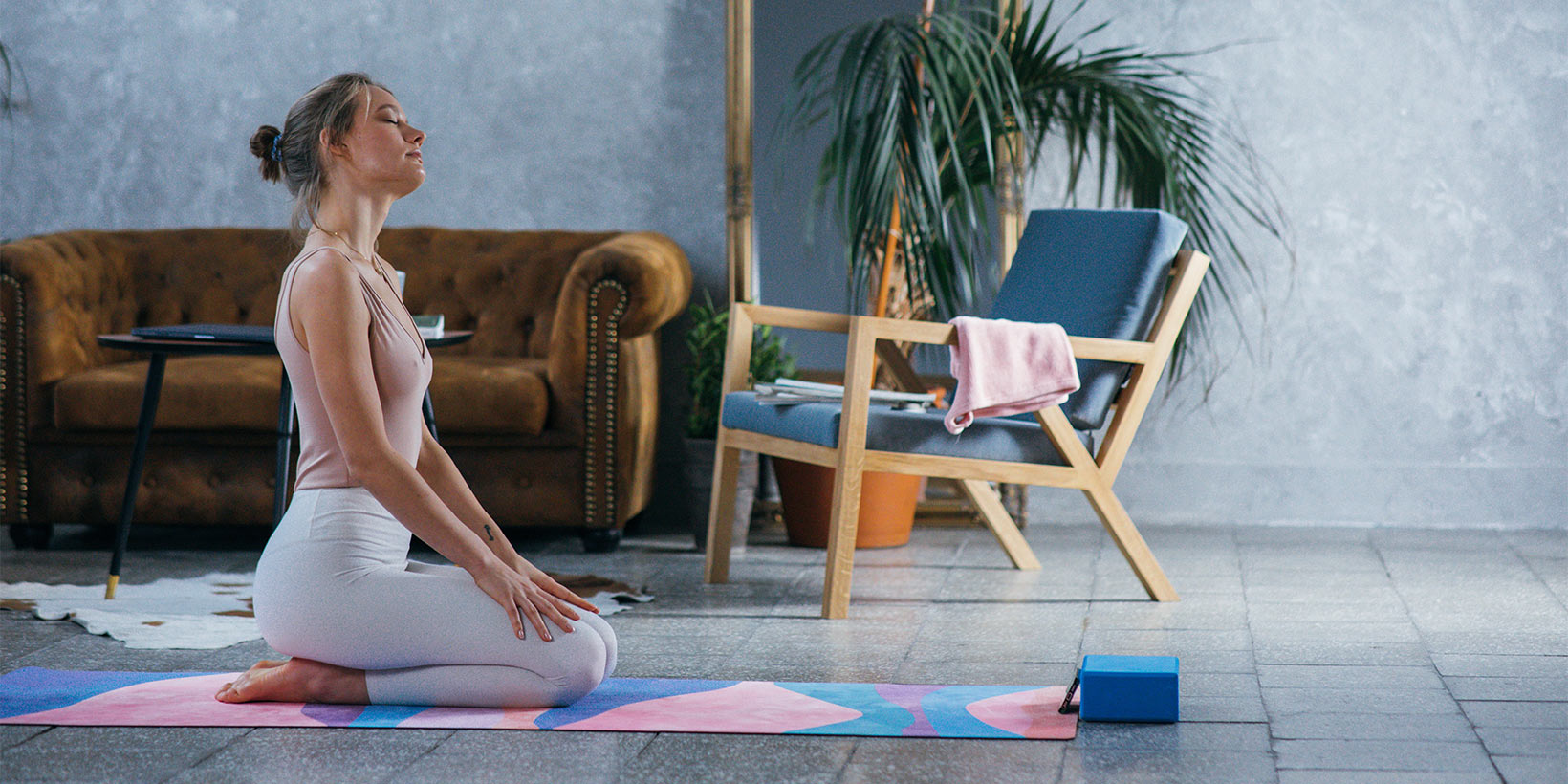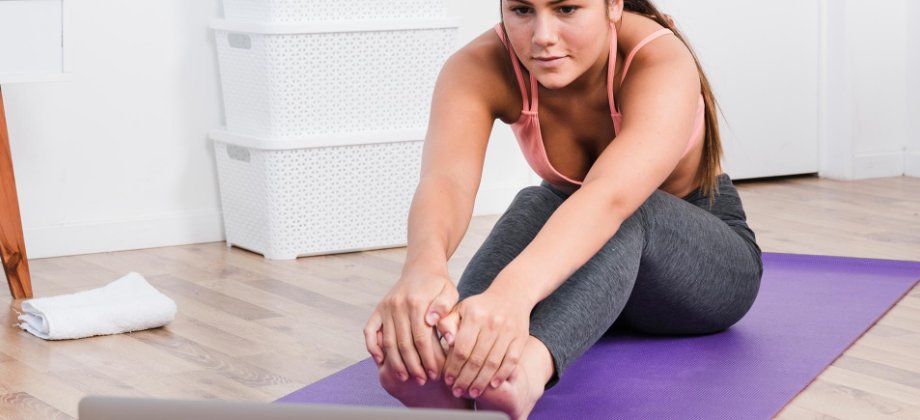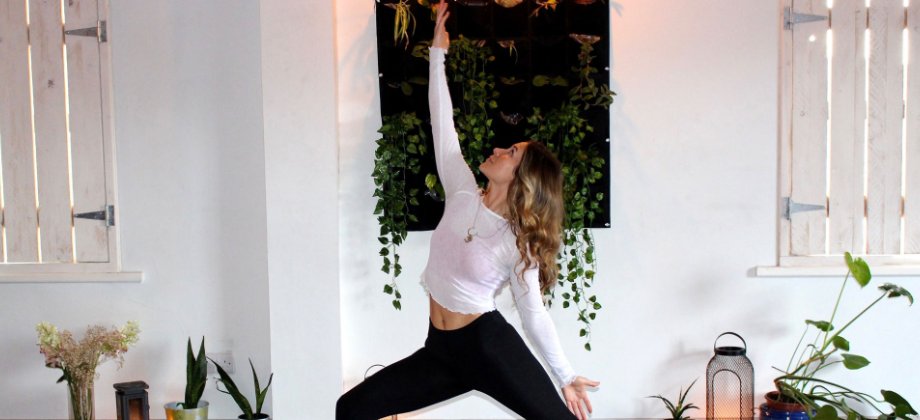
How to Teach With Props for Online Yoga Classes
Online teaching comes with a different set of challenges to teaching in person. When you teach a studio class, you generally have easy access to all the equipment you need — including props like yoga blocks, bricks, straps and blankets.
Then, when you use those props as part of your sequence, or you notice that a particular student could benefit from a prop to help them experience a posture in a different way, you can show them. Demonstrating is simple and quick, and you’re right there to help yogis make any adjustments they need.
When you’re teaching online, you have less control over the space your yogis are in. You can’t reach out and hand them a prop when you think it would help their practice. You may not even know if they have any props available — and most importantly, you’re not there next to them to help them use props safely and productively.
Using props in online teaching is a new skill, and it’s completely understandable if you feel daunted by it, or just feel that you haven’t quite nailed it yet.
But that doesn’t mean you can’t teach with props online. In fact, I’d suggest it’s really important that teachers do use props in their virtual classes, because propping can bring huge depth and support to physical yoga practice — not just for beginners, but for students of all levels.
Using props in online teaching is a new skill, and it’s completely understandable if you feel daunted by it, or just feel that you haven’t quite nailed it yet. Here are five ways to help your yogis use props effectively when you’re not in the room.
Know WHY you’re using props
Make an agreement with yourself that you’ll never offer props just for the sake of offering them. Props are valuable tools in our practice and teaching, but they’re only worth using when we’re clear on the purpose of the propping. This isn’t just for teaching online — it’s a commitment worth making for your in-person classes too.
So what’s the intention? You might choose to offer prop options to support the intention of a posture, for the class as a whole, or as a teaching tool to help just one particular student develop their practice.
Possible intentions could include:
- Developing flexibility
- Building strength
- Exploration — cultivating curiosity by encouraging students to experience a familiar posture in a new way
- Building confidence — by making a posture more accessible
- Progressing a posture from one variation to a different one (perhaps more challenging, perhaps not)
- Altering focus or effort — for example, props could be used to create a deeper passive stretch in a backbend or hip opener, or to feel a particular group of muscles working in a new way
- Correcting habits — props can be really effective at helping individual yogis change repetitive habits; for example, if a student tends to round their spine in forward folds, a strap (even if their hamstrings are flexible) can help them find more length and shift the focus away from simply folding forwards as far as they can
- Supporting rest and relaxation — by increasing comfort and ease
These are just a few ideas, and your purpose for propping will vary from student to student and class to class. But the key is that all prop guidance should be given intentionally. Within that, each yogi will have their own unique experience of the posture and the prop, but you’ll be able to see if the prop is supporting the intention or not.
When you know how you want students to use props, in order to support the intention, then it’s time to think about how to communicate all of this in a useful way online.
Build your propping strategy around that intention
When you know why you’re offering a prop, it’s easier to teach prop use effectively. If the intention is to support functional flexibility, then how can you build a sequence with a propping strategy that helps your students feel the difference between stretching a muscle and overextending a joint, for example?
If the intention is to alter the focus or effort of a posture, how can you use props to do that?
Your own yoga practice is your laboratory, here. Experiment with ways to use props to support an intention. Then, when you’ve done this physical research, add some book research on top: hit the anatomy books for insight into what effect your propping strategy might be having on the body. Why did using that prop in that way feel like that? What might it feel like to someone with a body very different from your own?
When you know how you want students to use props, in order to support the intention, then it’s time to think about how to communicate all of this in a useful way online.

Use cues that start simple and macro, then get more detailed and micro
Think of language as a primary tool. The way you use verbal cues can completely change the way a student experiences prop use. Again, this is true for in-person teaching too, but if you’re used to quickly showing a class how they could use a prop and then moving on, it’s a bit of a shift to start developing more specific verbal cueing skills.
Which means the secondary teaching tool is demonstrating. It doesn’t communicate detail well enough to be the only tool, or the primary tool, for teaching with props.
You can start with a wide view, and then as students get into the propped posture, guide them into more detail, with your intention directing the path you take with your cues. Let’s use a simple example: the use of a brick in Trikonasana, with the intention of exploring weight distribution.
To start macro, you could cue by asking yogis to pick up a yoga brick from a standing position and then enter the posture with the brick in hand, taking it to the mat. This means that everyone can transition into the posture relatively quickly, without interrupting their flow by explaining how to use the prop first.
Then, once in the posture, go micro. You could describe the process of sending weight back into the legs and allowing the hand, on the brick, to become lighter. You could ask students to lighten the hand on the brick with each inhale, and release weight into the brick with each exhale. You could ask them to explore different hand positions on the brick, and notice subtle effects on the pelvis, the core muscles, and the shoulders, as they do so. You could cue them to turn the brick on its end or on its side, to change the depth of the pose.
Allow the prop to be a point of playfulness and experimentation. Your verbal cues are crucial, because a visual cue — demonstrating — only goes so far.
Know what props your yogis have to hand
You don’t want to surprise an online class with a prop suggestion and then have them all scrambling around their living rooms/entire houses in search of something to use. Prepare them beforehand with an email that says you’ll be encouraging prop options during the class, and include a list of suggested props to have to hand.
That doesn’t mean they have to rush to buy props they haven’t already got, though. Include suggestions for around-the-house substitutes — objects like large books, thin scarves, cushions and blankets can work as blocks, straps, and bolsters.
Then at the start of the class, check what each yogi has available. If you know who has a block, who’s using a scarf as a strap, and who will be shifting a heavy book around their mat in place of a yoga brick, you can tailor your cues to the props that are actually there.
Memorise their names!
Finally, teaching with props online is easier if you know everyone’s names. You can’t quietly walk up to someone’s mat to suggest a prop that could support that individual in a posture. So knowing their names allows you to provide tailored propping strategies in a professional way, without disrupting the rest of the class while you figure out how to catch one yogi’s attention.
Taking the time to learn your students’ names is a great way to connect with them and build a community vibe as well, so it’s a win-win.
Teaching with props during video classes does feel different. But by honing verbal cueing skills and making your propping strategies more purposeful, you can use props to add more depth to your online teaching.






